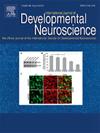LEV通过AMPK/SIRT1通路在丙酸诱导的自闭症模型中的治疗作用
摘要
目的:在本研究中,我们旨在通过评估社交缺陷、学习和记忆障碍及其神经化学相关因素,评估左乙拉西坦(LEV)在丙酸(PPA)诱导的自闭症模型中的治疗效果。左乙拉西坦是一种抗癫痫药物,用于治疗局灶性和全面性癫痫。我们进一步研究了AMPK/SIRT1信号通路作为潜在的分子机制的参与。材料与方法:雄性Wistar白化大鼠30只,随机分为正常对照组(n = 10)、PPA +生理盐水组(n = 10)和PPA + LEV组(n = 10)。腹腔注射PPA (250 mg/kg/天,5天)诱导自闭症样特征。口服LEV (100 mg/kg/天)15天。评估行为表现(三室社交测试、开场测试、被动回避学习)、生化指标(丙二醛[MDA]、肿瘤坏死因子-α [TNF-α]、脑源性神经营养因子[BDNF]、AMPK和SIRT1)和组织病理学变化(CA1、CA3、浦肯野细胞的神经元计数;GFAP免疫染色)。结果:在社交能力测试中,PPA +生理盐水组的社交时间比对照组减少51.6%(67.2%±2.4%比32.5%±2.1%),而LEV组的社交时间比PPA +生理盐水组增加121.8%(72.1%±4.5%)。PPA +生理盐水组野外活动减少83%(17.3±3.2 vs. 2.9±0.8),LEV组增加158%(7.5±2.16)。PPA +生理盐水组被动回避潜伏期减少76%(245.9±17.5 s vs 59.2±20.8 s), LEV组被动回避潜伏期增加180%(165.7±18.3 s)。与对照组相比,PPA +生理盐水组MDA水平升高了187%(49.9±1.4比143.5±4.7 nmol/g protein), LEV组MDA水平下降了31%(98.6±5.4)。PPA +生理盐水组TNF-α升高1012%(13.1±0.9 vs. 145.8±10.6 pg/mg蛋白),LEV组TNF-α降低39%(88.4±3.9)。PPA +生理盐水组BDNF降低52%(5.21±0.9 vs 2.48±0.3 pg/mg蛋白),LEV组BDNF升高88%(4.66±0.5)。PPA +生理盐水组AMPK降低62%(113.5±6.3 vs. 43.2±7.5 pg/mg蛋白),LEV组AMPK升高73%(74.8±2.1)。PPA +生理盐水组SIRT1降低75%(4.65±0.5 vs. 1.17±1.1 pg/mg蛋白),LEV组SIRT1升高132%(2.72±0.8)。组织学上,PPA +生理盐水组CA1神经元计数减少35%(67.2±2.04 vs. 43.8±1.1),LEV组CA1神经元计数增加38%(60.5±1.3)。PPA +生理盐水组CA3神经元计数减少31%(48.5±3.2比33.7±1.9),LEV组CA3神经元计数增加31%(44.2±0.8)。PPA +生理盐水组浦肯野细胞减少53%(26.2±0.5 vs 12.2±0.8),LEV组浦肯野细胞增加68%(20.5±1.1)。PPA +生理盐水组CA1、CA3和小脑GFAP指数升高(31.6±2.4 vs. 47.5±1.2;33.4±1.1 vs. 48.2±0.7;21.2±1.6 vs. 32.3±0.9),LEV组GFAP指数降低(分别为40.3±0.6;39.5±0.8;28.5±1.4)。这些治疗效果伴随着AMPK/SIRT1通路的显著上调,而这在PPA +生理盐水组中被抑制。结论:LEV治疗可能通过激活AMPK/SIRT1通路的抗炎、抗氧化和神经保护机制改善ppa诱导的行为、生化和组织学损伤。这些发现支持LEV作为自闭症谱系障碍的潜在治疗候选药物。

Objectives
In this study, we aimed to evaluate the therapeutic effect of levetiracetam (LEV), an antiepileptic drug used in the treatment of both focal and generalized epilepsy, in a propionic acid (PPA)-induced autism model by assessing social deficits, learning and memory impairments, and their neurochemical correlates. We further examined the involvement of the AMPK/SIRT1 signalling pathway as a potential molecular mechanism.
Material and Methods
Thirty male Wistar albino rats were allocated into three groups: normal control (n = 10), PPA + saline (n = 10) and PPA + LEV (n = 10). Autism-like features were induced by intraperitoneal PPA administration (250 mg/kg/day, 5 days). LEV was administered orally (100 mg/kg/day) for 15 days. Behavioural performance (three-chamber sociability test, open-field test, passive avoidance learning), biochemical markers (malondialdehyde [MDA], tumour necrosis factor-alpha [TNF-α], brain-derived neurotrophic factor [BDNF], AMPK, and SIRT1) and histopathological changes (neuronal counts in CA1, CA3, Purkinje cells; GFAP immunostaining) were evaluated.
Results
In the sociability test, social interaction time decreased by 51.6% in the PPA + saline group compared to controls (67.2% ± 2.4% vs. 32.5% ± 2.1%), while LEV increased it by 121.8% vs. PPA + saline (72.1% ± 4.5%). Open-field ambulation decreased by 83% in PPA + saline (17.3 ± 3.2 vs. 2.9 ± 0.8) and increased by 158% with LEV (7.5 ± 2.16). Passive avoidance latency decreased by 76% in PPA + saline (245.9 ± 17.5 s vs. 59.2 ± 20.8 s) and increased by 180% with LEV (165.7 ± 18.3 s). MDA levels increased by 187% in PPA + saline vs. controls (49.9 ± 1.4 vs. 143.5 ± 4.7 nmol/g protein) and decreased by 31% with LEV (98.6 ± 5.4). TNF-α increased by 1012% in PPA + saline (13.1 ± 0.9 vs. 145.8 ± 10.6 pg/mg protein) and decreased by 39% with LEV (88.4 ± 3.9). BDNF decreased by 52% in PPA + saline (5.21 ± 0.9 vs. 2.48 ± 0.3 pg/mg protein) and increased by 88% with LEV (4.66 ± 0.5). AMPK decreased by 62% in PPA + saline (113.5 ± 6.3 vs. 43.2 ± 7.5 pg/mg protein) and increased by 73% with LEV (74.8 ± 2.1). SIRT1 decreased by 75% in PPA + saline (4.65 ± 0.5 vs. 1.17 ± 1.1 pg/mg protein) and increased by 132% with LEV (2.72 ± 0.8). Histologically, CA1 neuronal counts decreased by 35% in PPA + saline (67.2 ± 2.04 vs. 43.8 ± 1.1) and increased by 38% with LEV (60.5 ± 1.3). CA3 neuronal counts decreased by 31% in PPA + saline (48.5 ± 3.2 vs. 33.7 ± 1.9) and increased by 31% with LEV (44.2 ± 0.8). Purkinje cells decreased by 53% in PPA + saline (26.2 ± 0.5 vs. 12.2 ± 0.8) and increased by 68% with LEV (20.5 ± 1.1). GFAP indices in CA1, CA3 and cerebellum were elevated in PPA + saline (31.6 ± 2.4 vs. 47.5 ± 1.2; 33.4 ± 1.1 vs. 48.2 ± 0.7; 21.2 ± 1.6 vs. 32.3 ± 0.9) and reduced with LEV (40.3 ± 0.6; 39.5 ± 0.8; 28.5 ± 1.4, respectively).
These therapeutic effects were accompanied by marked upregulation of the AMPK/SIRT1 pathway, which was suppressed in the PPA + saline group.
Conclusion
LEV treatment ameliorated PPA-induced behavioural, biochemical and histological impairments, likely via anti-inflammatory, antioxidant and neuroprotective mechanisms involving activation of the AMPK/SIRT1 pathway. These findings support LEV as a potential therapeutic candidate for autism spectrum disorder.

 求助内容:
求助内容: 应助结果提醒方式:
应助结果提醒方式:


